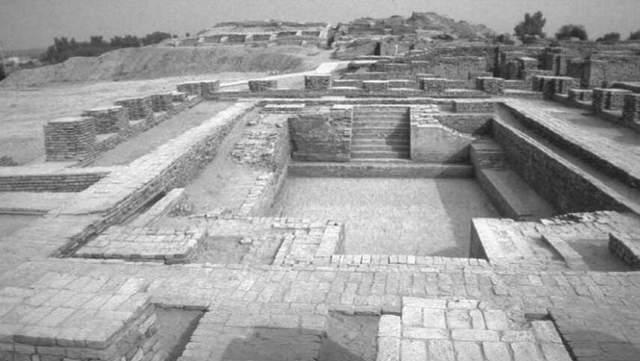Mohenzo-Daro, which means "Hill of Death" in the native language, is located in Pakistan's Sindh province, which was probably built around 2500 BC and abandoned in 1900 BC. By 1920 it was rediscovered by Western archaeologists and excavated for half a century. In the city of Mohenzodaro, archaeologists have discovered advanced scientific and technological achievements of ancient Indian civilization, but they also wonder the reason for the destruction of the city.

Forgotten:
The ancient city of Mohenzo-Darrow was not recorded in human written records until 1920, when an Indian archaeologist found a stone-sharpened blade in the area, and in 1925 the Englishman John Marshall began to lead a team to carry out large-scale excavations. By the end of World War II, Mortimer Wheeler (who was director of the Museum in London) began to travel to Sindh for further excavations, and a large number of artifacts were shipped back to England for analysis. It was only in ancient times that it was confirmed that there was an advanced and powerful ancient human civilization in the Indus Valley. Unfortunately, the remaining text cannot be deciphered.
Advanced drainage system:
The ancient city of Mohenzo-d'Auro was built with a water supply system and a drainage system. The entire city has more than 700 wells, and the purpose of so many wells is unknown, as the city is close to the Indus River and is not short of water. Drainage ditches were dug on both sides of city streets, and in large towering buildings there were remnants of drainage channels, and the wastewater generated by people could be discharged and treated centrally through the drainage channels. Bathrooms and toilets have even been found in private homes. (Even many of the conditions in North India today cannot be met.)
Castles in the heart of the city and surrounding residential areas:
On the one hand, the appearance of castles indicates the increase in the degree of civilization, the beginning of the concentration of power in the hands of a few people, but also reflects the improvement of the engineering technology of this civilization, and the emergence of professionals who master mathematics and civil technology.
Defensive facilities:
The city did not have walls, but was surrounded by guard towers, so archaeologists suspect that Mohenzo-Daro was an administrative or commercial center, rather than the capital of civilization or a military stronghold.
Discovery of bronze furnaces:
While excavating objects, a lot of copper tools and children's toys, statues were found. The bronze method uses the lost-wax method. There are undecipherable words and images on the statue. The most famous of the excavated objects is the Pashupati Seal, which is in the collection of the National Museum of India.
Cult of the gods:
The religious statues of the ancient city of Mohenzo-Darrow were a common motherhood cult in ancient Near Eastern civilizations, and the statues of the gods showed a feminine appearance. In 1926, a bronze statue of a "dancing girl" was found, 10.5 cm high, with a forked waist.
Buildings, large communal baths:
Most of the buildings were built of burnt stucco bricks, the roofs were made of wood, and the population was about 40,000 or so. There are some large buildings that are considered granaries or conference centers, and there are some rooms next to them, which are thought to be the residences of teachers or religious personnel. In addition, there is a large bath in the center of the city, he is very exquisite, surrounded by brick steps, and the bottom is paved with resin for waterproofing, and found a furnace to heat water, that is, the ancient Indians at that time could enjoy the treatment of hot baths.